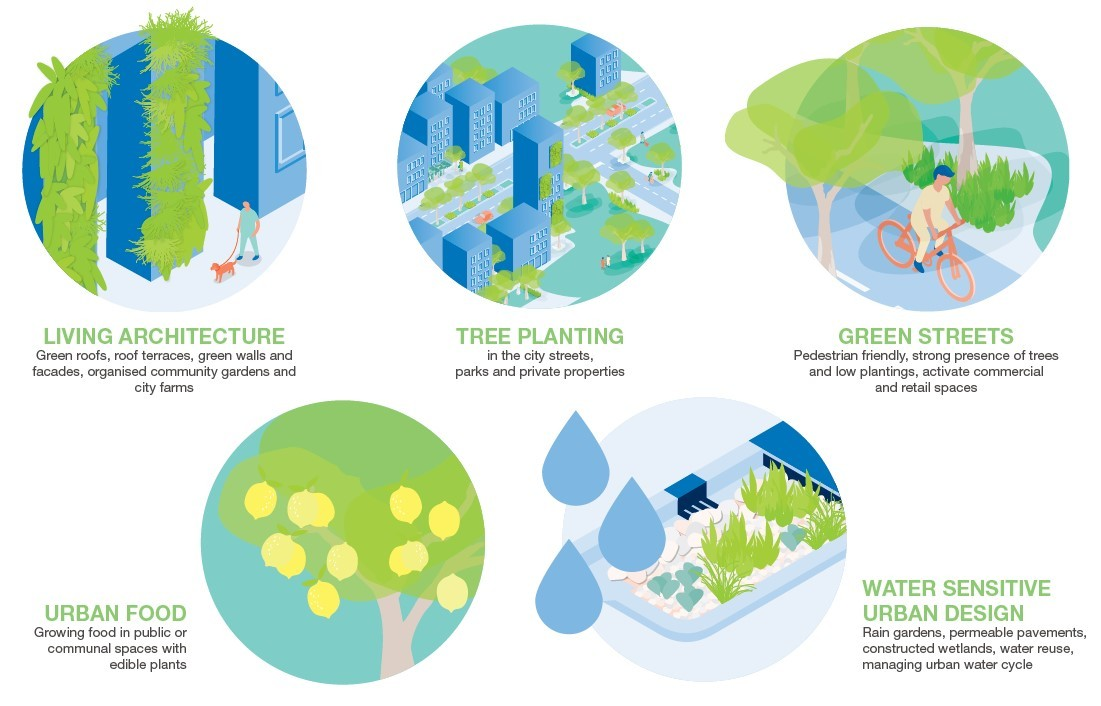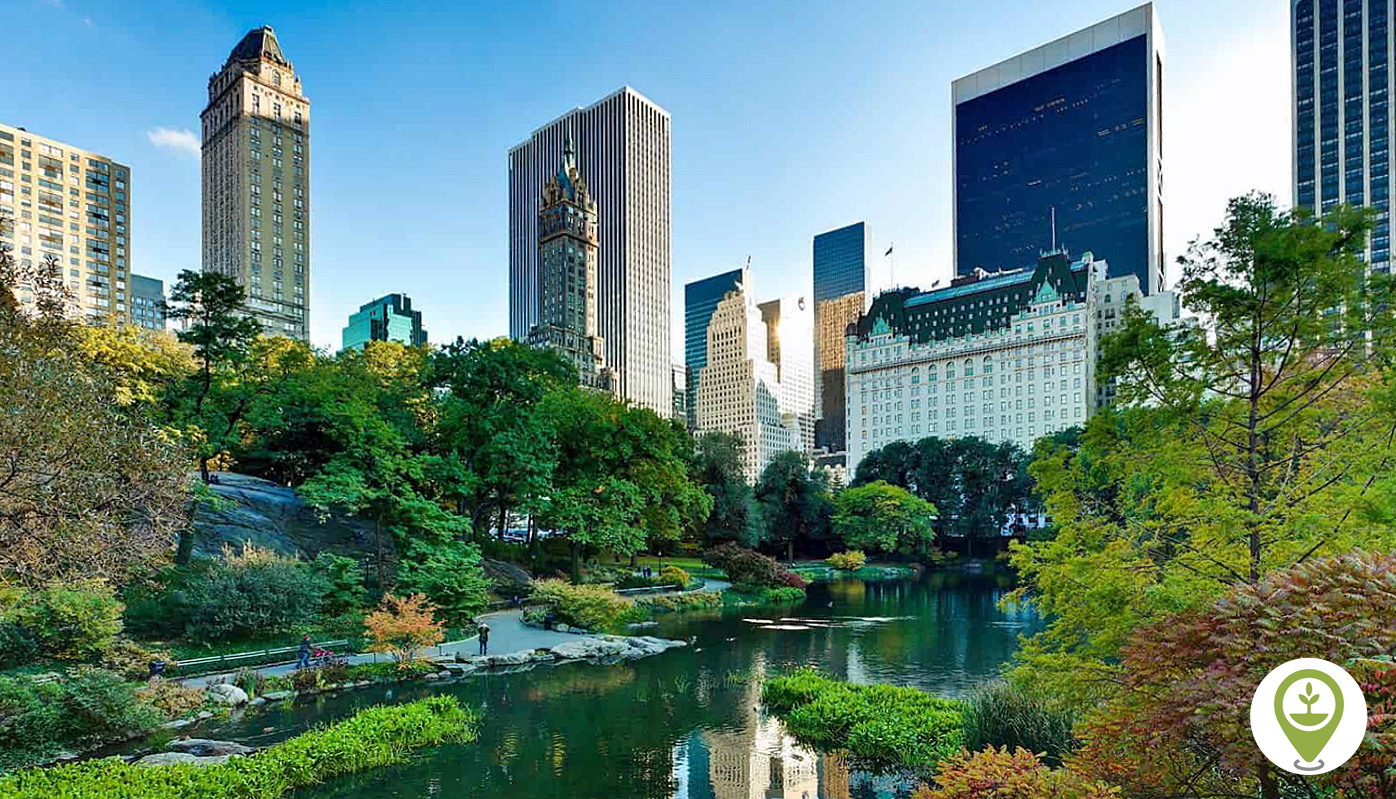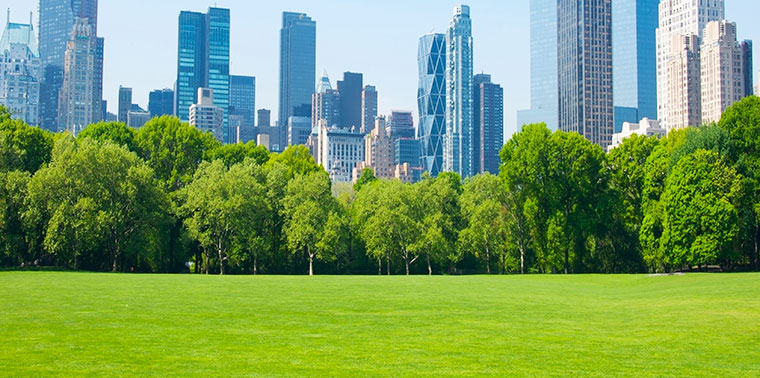Urban Green Spaces: Breathing Life into Concrete Jungles & a Breath of Fresh Air for the Planet
Urban landscapes, often perceived as concrete jungles, are increasingly being reimagined. At the heart of this transformation lies the crucial role of urban green spaces. More than just aesthetically pleasing patches of nature, these vital pockets of vegetation are becoming essential for the health of both our cities and the planet. They’re ecological powerhouses, subtly but significantly contributing to a healthier, more sustainable future.
The Environmental Symphony: How Green Spaces Benefit the Earth
Urban green spaces, including parks, gardens, green roofs, and even strategically planted street trees, act as a complex ecosystem within the urban environment. Their benefits extend far beyond mere aesthetics. They perform a multitude of critical environmental functions, collectively contributing to a healthier planet.
1. Air Purification: Breathing Easier in the City
Cities are notorious for air pollution, caused by vehicle emissions, industrial processes, and other sources. Green spaces act as natural air filters.
- How it works: Plants absorb pollutants like particulate matter, nitrogen oxides, and sulfur dioxide through their leaves. They also release oxygen, enhancing air quality.
Pollutant Absorption Champions (per acre, estimates):
| Pollutant | Estimated Absorption (lbs/year) |
|---|---|
| Ozone | 50-100 |
| Particulate Matter | 10-50 |
2. Climate Change Combatants: Cooling & Carbon Capture
As global temperatures rise, urban areas, with their heat-absorbing surfaces, experience the “urban heat island effect,” becoming significantly hotter than surrounding rural areas. Green spaces offer a natural defense.
- How it works: Through evapotranspiration (the release of water vapor from plants) and shading, they cool the local environment. They also act as carbon sinks, absorbing carbon dioxide (a major greenhouse gas) from the atmosphere through photosynthesis.
Cooling Powerhouses (examples):
| Green Feature | Temperature Reduction (Celsius) |
|---|---|
| Tree Shade | 2-8 |
| Green Roofs | 1-5 |
| Ponds/Water Bodies | 2-4 |
3. Water Management Wizards: Rainwater Resilience
Urban areas often struggle with stormwater runoff, leading to flooding and pollution of waterways. Green spaces are designed to act as natural sponges.
- How it works: Plants absorb rainwater, and the soil helps filter and retain it, reducing runoff and replenishing groundwater. This helps in flood control.
Rainwater Management Heroes (examples):
| Green Feature | Stormwater Runoff Reduction (%) |
|---|---|
| Green Roofs | 50-90 |
| Rain Gardens | 70-100 |
| Permeable Paving | Variable |
4. Biodiversity Boosters: Havens for Wildlife
Urban environments can be hostile to wildlife. Green spaces create essential habitats, providing food, shelter, and breeding grounds for various species.
- How it works: They create corridors that connect fragmented natural habitats, allowing wildlife to move safely and preventing the isolation of populations.
Biodiversity Benefits (examples):
| Animal Group | Benefit |
|---|---|
| Birds | Nesting sites, food sources (insects, seeds) |
| Insects | Pollination, food source (for birds) |
| Mammals | Shelter, food, movement corridors |
5. Soil Health Stewards: Nourishing the Earth
Healthy soil is vital for plant growth and overall ecosystem function. Green spaces promote healthy soil conditions.
- How it works: Plant roots stabilize the soil, preventing erosion. Organic matter from decaying plants enriches the soil, improving its water-holding capacity and nutrient content.
Soil Health Advantages (examples):
| Benefit | Result |
|---|---|
| Reduced Erosion | Prevention of sediment pollution |
| Improved Water Retention | Reduced irrigation needs and runoff |
| Enhanced Nutrient Cycling | Increased plant productivity and health |
The Future of Green: Integrating Nature into Urban Design
The benefits of urban green spaces are undeniable. As we move towards a more sustainable future, the integration of nature into urban design becomes critical. This includes:
- Strategic Planning: Incorporating green spaces into urban planning from the outset, not as an afterthought.
- Innovative Design: Embracing innovative green infrastructure solutions like green walls, permeable pavements, and urban forests.
- Community Engagement: Involving local communities in the design, implementation, and maintenance of green spaces.
By prioritizing and expanding urban green spaces, we can create cities that are not only livable but also contribute positively to the health of our planet, making urban environments truly sustainable for generations to come.

Additional Information
The Environmental Benefits of Urban Green Spaces: A Detailed Analysis
Urban green spaces, encompassing parks, gardens, forests, green roofs, and even street trees, are vital components of a sustainable urban environment. Beyond their aesthetic appeal and recreational opportunities, they provide a plethora of crucial environmental benefits. This analysis delves into these benefits, exploring the underlying mechanisms and their significance for the environment and human well-being.
1. Climate Change Mitigation and Adaptation:
- Carbon Sequestration:
- Mechanism: Trees and other vegetation absorb atmospheric carbon dioxide (CO2) through photosynthesis, converting it into biomass (leaves, wood, roots). This “sequesters” carbon, effectively removing it from the atmosphere and mitigating the greenhouse effect.
- Significance: Urban green spaces can help offset a portion of CO2 emissions from urban activities (transportation, industry, buildings). Larger, more mature trees, and forests within urban areas store significantly more carbon than smaller plants or younger trees.
- Analysis: The rate of carbon sequestration varies depending on tree species, age, climate, and management practices. Studies often quantify this benefit, highlighting the potential of strategically planted trees to reduce a city’s carbon footprint.
- Urban Heat Island Effect Mitigation:
- Mechanism:
- Evapotranspiration: Plants release water vapor through transpiration, a cooling process akin to sweating. This cools the surrounding air, particularly in summer months.
- Shading: Trees and other vegetation provide shade, reducing the amount of solar radiation absorbed by surfaces like asphalt and concrete, which are major contributors to urban heat.
- Albedo Effect: Vegetated surfaces have a higher albedo (reflectivity) than darker urban surfaces. This means they reflect more solar radiation back into space, reducing heat absorption.
- Significance: Reduces urban temperatures, decreasing energy consumption for cooling (air conditioning), lessening the risk of heat-related illnesses and mortality (especially for vulnerable populations), and improving air quality.
- Analysis: Green infrastructure designs like green roofs and green walls can contribute significantly to heat island mitigation, especially in areas with high building densities. The effectiveness of these measures can be measured using thermal imaging and meteorological data.
- Mechanism:
- Reduced Energy Consumption:
- Mechanism: Trees strategically planted around buildings can provide shade in summer, reducing the need for air conditioning, and provide windbreaks in winter, reducing heating demands. Green roofs can also insulate buildings, reducing energy use for both heating and cooling.
- Significance: Lowering energy demand leads to reduced greenhouse gas emissions (from power plants), saving residents money and lessening the strain on energy infrastructure.
- Analysis: Modeling software can be used to estimate the energy savings potential of different green space configurations. The cost-effectiveness of implementing green infrastructure in terms of energy savings is often a key factor in policy decisions.
2. Air and Water Quality Improvement:
- Air Pollution Reduction:
- Mechanism:
- Absorption: Plants absorb air pollutants like particulate matter (PM2.5, PM10), nitrogen oxides (NOx), sulfur dioxide (SO2), and ozone (O3) through their leaves and bark.
- Deposition: Leaves and other plant surfaces act as filters, trapping particulate matter and pollutants from the air, leading to their eventual deposition onto the ground.
- Photochemical Reactions: Some tree species can influence the formation and breakdown of ground-level ozone through emissions of volatile organic compounds (VOCs).
- Significance: Improves air quality, reducing respiratory illnesses (asthma, bronchitis), cardiovascular disease, and other health problems.
- Analysis: Air quality monitoring stations in and around green spaces can measure the concentrations of different pollutants. Studies assess the ability of different tree species to capture pollutants, informing planting strategies.
- Mechanism:
- Water Quality Improvement:
- Mechanism:
- Stormwater Management: Green spaces, particularly permeable surfaces like parks and green infrastructure features (rain gardens, bioswales), absorb rainwater, reducing surface runoff. This reduces the volume of water entering storm drains and sewer systems, preventing flooding.
- Filtration: As water infiltrates the soil, it is filtered, removing pollutants like sediment, nutrients (phosphorus and nitrogen from fertilizers), and heavy metals. Tree roots and vegetation also help stabilize the soil, preventing erosion.
- Groundwater Recharge: Infiltration of rainwater allows for groundwater recharge, which replenishes water supplies.
- Significance: Protects water bodies (rivers, lakes, and coastal areas) from pollution and flooding. Reduces the need for expensive stormwater infrastructure, minimizes the risk of combined sewer overflows, and helps conserve water resources.
- Analysis: Hydrological models are used to assess the impact of green spaces on stormwater runoff. Water quality testing can be performed to measure the effectiveness of green spaces in filtering pollutants.
- Mechanism:
3. Biodiversity Conservation:
- Habitat Provision:
- Mechanism: Urban green spaces, even small ones, can provide habitats for a variety of plant and animal species, including birds, insects, mammals, amphibians, and reptiles. They provide food, shelter, and breeding sites.
- Significance: Supports urban biodiversity, which is important for ecosystem services like pollination, pest control, and seed dispersal. Provides opportunities for people to connect with nature and experience the benefits of biodiversity.
- Analysis: Biodiversity surveys (bird counts, insect sampling) are used to assess the species richness and abundance in green spaces. Connectivity analysis examines how green spaces link to form wildlife corridors, which are crucial for species movement and survival.
- Supporting Pollinators:
- Mechanism: Flowers in urban green spaces provide nectar and pollen for pollinators like bees, butterflies, and other insects. These pollinators play a critical role in the reproduction of plants and agricultural crops.
- Significance: Supports pollinator populations, which are facing declines due to habitat loss, pesticide use, and climate change. This is essential for maintaining food security and ecosystem health.
- Analysis: Studies often focus on identifying the floral resources available in urban green spaces and assessing the abundance and diversity of pollinator species. The effectiveness of pollinator gardens in supporting pollinator populations can also be evaluated.
- Reducing Fragmentation:
- Mechanism: Urban green spaces, particularly interconnected networks of green corridors (e.g., linear parks, greenways), can reduce habitat fragmentation. This fragmentation can isolate populations of plants and animals, making them more vulnerable to extinction.
- Significance: Improves the resilience of urban ecosystems and allows species to move between habitats, increasing genetic diversity and overall species survival.
- Analysis: Landscape ecology techniques are used to assess the connectivity of green spaces. GIS software and spatial analysis are used to model the effects of fragmentation and plan green infrastructure projects.
4. Soil Health and Ecosystem Services:
- Soil Improvement:
- Mechanism: Trees and other vegetation contribute to soil health by adding organic matter (leaf litter, root decay), which improves soil structure, water retention, and nutrient content. Roots also help to prevent soil erosion.
- Significance: Healthy soils are essential for plant growth and provide a range of ecosystem services, including water filtration, carbon sequestration, and nutrient cycling.
- Analysis: Soil testing is conducted to evaluate soil properties such as organic matter content, nutrient levels, and bulk density.
- Ecosystem Services:
- Mechanism: Green spaces provide a variety of ecosystem services, including pollination, pest control, waste decomposition, nutrient cycling, and water purification.
- Significance: Contribute to the overall health and resilience of urban ecosystems, supporting human well-being.
- Analysis: Ecosystem service valuation is a method to quantify the economic value of these services, which can be used to justify investments in urban green spaces.
Implementation and Considerations:
- Strategic Planning: Urban green space planning needs to be integrated into overall urban development strategies, considering factors such as site selection, connectivity, size, species selection, and management practices.
- Community Involvement: Engage residents in the planning and management of green spaces, fostering a sense of ownership and encouraging their use and stewardship.
- Multifunctional Design: Design green spaces to provide multiple benefits, such as combining stormwater management with recreation and wildlife habitat.
- Adaptive Management: Monitor the effectiveness of green spaces and adapt management practices as needed to maximize their environmental benefits.
- Policy and Funding: Implement policies and provide funding to support the creation, maintenance, and expansion of urban green spaces.
Conclusion:
Urban green spaces are essential for creating sustainable and resilient urban environments. Their capacity to mitigate climate change, improve air and water quality, conserve biodiversity, and enhance human well-being is undeniable. By strategically planning, implementing, and managing green spaces, cities can significantly contribute to environmental protection and create healthier, more livable communities for all. This requires a multidisciplinary approach involving urban planners, landscape architects, ecologists, policymakers, and the community. Investing in and prioritizing urban green space is not just an environmental imperative but also a crucial step towards a more sustainable and equitable future.

